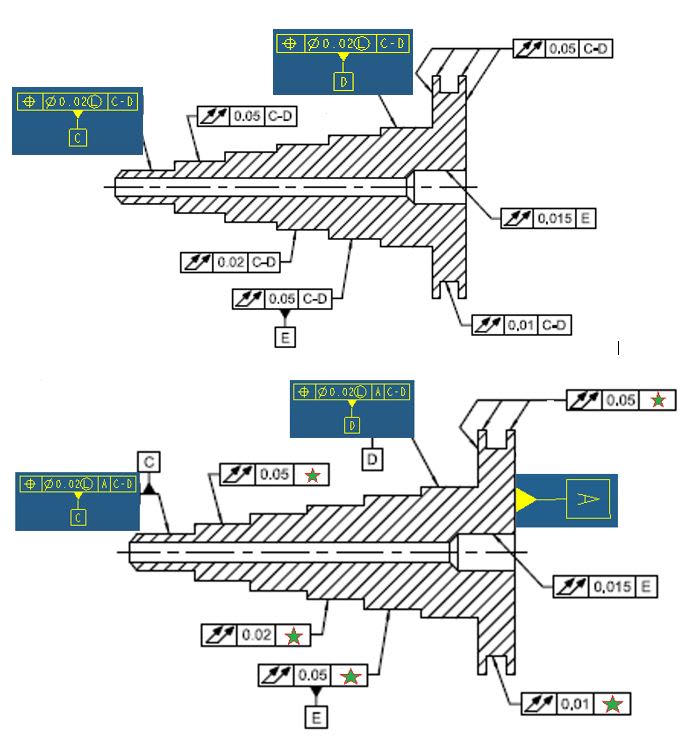1.) Upper case: Would you consider a valid scenario if LMC is used as shown? Copied from Y14.5-2018, but modified to fit my question.
Datum feature C modified at LMC used together with C(RMB)-D(RMB)
Datum feature D modified at LMC used together with C(RMB)-D(RMB)
2.) Lower case: Same as the upper case, but the common datum feature axis is now secondary (instead of primary). The "green star" in FCF in the lower case could be understood as A=primary and C-D common datum feature=secondary.
3.) Related question (additional), but not depicted: how would you use / show the approach per 7-16/page 101, if the two features that make datum feature A have different size? I think 2X cannot be used, correct? Then how would the symbology works in this case? (I am not asking about the case 10-52/ page 232, here datum features ARE entirely different datums, but about how to show the concept of fig 7-16 when the features are different sizes and ARE datum features)

Datum feature C modified at LMC used together with C(RMB)-D(RMB)
Datum feature D modified at LMC used together with C(RMB)-D(RMB)
2.) Lower case: Same as the upper case, but the common datum feature axis is now secondary (instead of primary). The "green star" in FCF in the lower case could be understood as A=primary and C-D common datum feature=secondary.
3.) Related question (additional), but not depicted: how would you use / show the approach per 7-16/page 101, if the two features that make datum feature A have different size? I think 2X cannot be used, correct? Then how would the symbology works in this case? (I am not asking about the case 10-52/ page 232, here datum features ARE entirely different datums, but about how to show the concept of fig 7-16 when the features are different sizes and ARE datum features)

